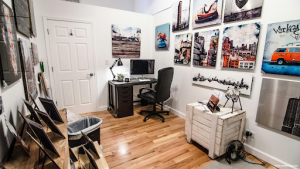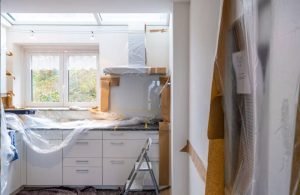Last Updated on January 8, 2025 by teamobn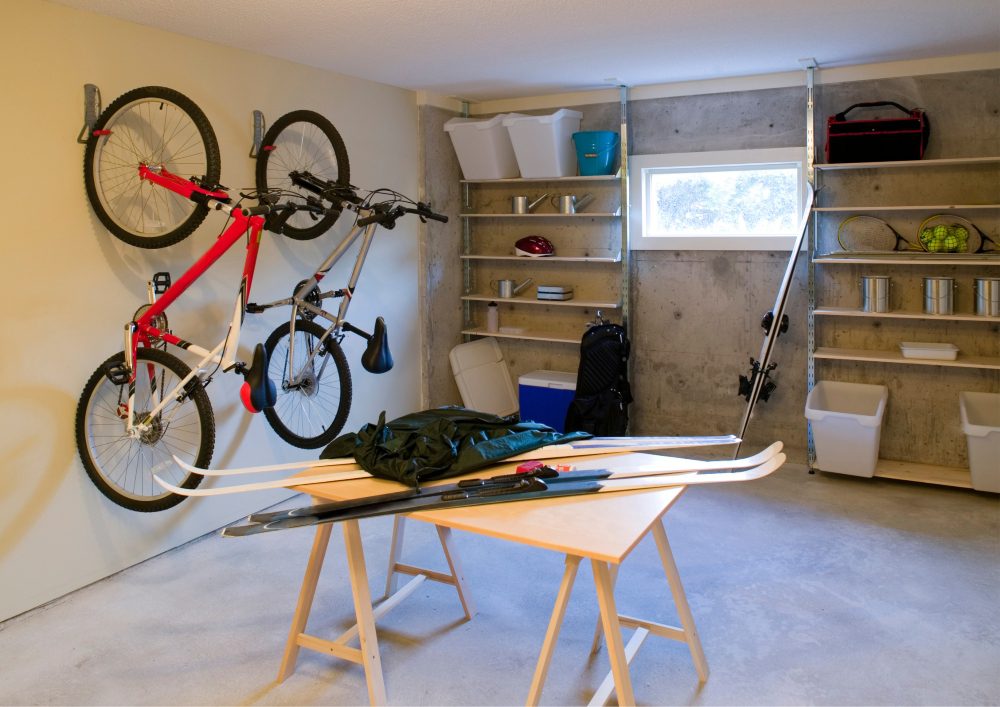
Small basements tend to become an afterthought for many homeowners. Yet, these spaces can be premium areas that make your home much bigger.
Below is our guide and tips on basement remodelling to get the most out of the small space.
Contents
Start With the Basics
Before you dive headlong into remodelling your small basement, there are some essential groundwork steps you should not ignore. Getting caught up in the excitement of design possibilities is easy, but taking time to prepare can save you a lot of hassle later.
Remove clutter
First off, tackle the clutter that’s likely accumulated over time. A clean space not only allows you to see the available area but also provides you with a blank canvas. This makes it easier to envision different design ideas. Donate or discard items you no longer need and clear the way for a more functional living space.
Take measurements
Next, arm yourself with a measuring tape. Accurate measurements are crucial for planning out your basement remodel. Knowing the dimensions of your space helps you choose the right furniture and storage solutions. A floor plan sketched on paper can serve as your roadmap, helping you avoid costly mistakes.
While measuring, also consider the height and layout of your basement. Some basements have low ceilings or structural elements like columns that can limit your design options. Being aware of these limitations upfront can guide you to make smarter choices, such as opting for low-profile furniture or planning around those immovable beams or columns.
Check for dampness
Moisture and dampness are common issues in basements. Before doing any remodelling, make sure to check for water leaks, mildew, or damp spots. Waterproofing your basement may be necessary to prevent future problems.
Use a dehumidifier to help control moisture levels. You can also use waterproof paint to control any moisture from entering the space when it rains.
Ask for Building Permits
Let’s talk about permits. Many areas require building permits for remodelling projects. Skipping this step can cause fines and issues if you ever decide to sell your home. Take time to research local building codes and apply for any necessary permits.
You may also need to hire certified professionals if the project involves complicated electrical or plumbing work. If you are considering professional contractors, look for ones who will obtain the permits themselves.
Inspect the Electrical Wiring
Power outlets and wiring are other basics to consider. A well-thought-out electrical plan ensures that you have adequate power for lights, electronics, and appliances.
Consult with an electrician to plan the locations for outlets and switches, keeping in mind how you intend to use each area of your basement.
Consider the Ventilation
Ventilation is yet another factor you can’t afford to ignore. Basements are often closed-off spaces with little to no natural air circulation, leading to musty odours and poor air quality. Good ventilation is essential for a comfortable living environment. You might need to install a new window or use fans and air purifiers to help circulate the air.
Flooring Choices
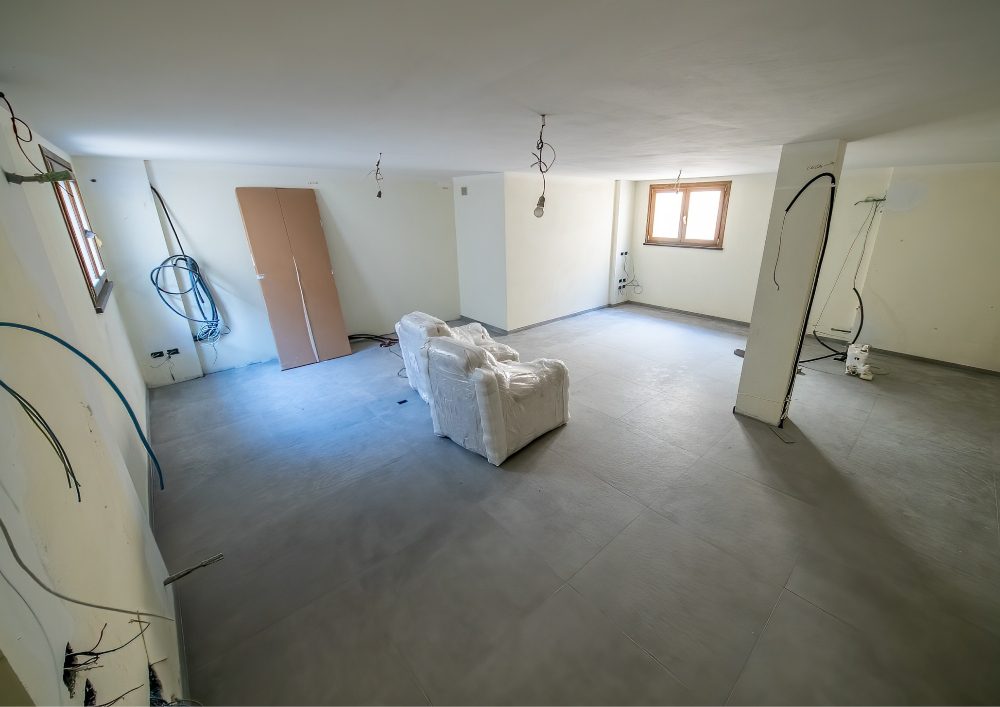
Choosing the right flooring can make or break your basement remodel. Not only should it look good, but it also needs to meet functional requirements.
Here are some flooring options for your basement, along with their pros and cons.
Laminate Flooring
Laminate flooring is like the jack-of-all-trades in the flooring world. It can mimic the look of hardwood or stone but comes at a fraction of the cost. It’s a go-to choice if you’re looking to save some money but still want a stylish finish. Plus, laminate is durable and resists scratches, which is excellent for pets or kids running around.
However, there’s a catch. Laminate doesn’t do well with moisture. If your basement is prone to dampness, you might want to think twice before going this route. Spills need to be wiped up immediately to prevent warping or swelling.
Vinyl Flooring
Vinyl flooring is like the superhero of basement flooring options. It’s water-resistant and affordable, and you can find it in just about any look you want, from wood to stone and even geometric patterns. Vinyl flooring is comfy underfoot and easy to install, making it a DIYer’s dream.
On the downside, it’s not as long-lasting as some other options. The material can dent and tear over time. It’s not the best choice if you’re after something that’ll last for decades, but it’s tough to beat for a quick and easy update.
Ceramic Tiles
Ceramic tiles are a classic choice, known for their durability and water resistance. They’re a popular pick for basements that might get wet, like laundry areas or home gyms with sweaty workouts. And if one tile breaks? You only have to replace that one, not the whole floor.
However, ceramic tiles can feel cold and hard underfoot. You might want to pair them with a few rugs or consider installing radiant heating underneath. Also, the grout lines can be painful to clean and may need resealing over time.
Engineered Hardwood
Engineered hardwood brings the timeless elegance of wood flooring to your basement. It’s made from real wood but designed to be more stable, reducing the risks of warping or swelling due to moisture. This makes it a more suitable choice for basements compared to solid hardwood.
But here’s the thing: engineered hardwood is on the pricey side. Plus, you’ll need to be careful about moisture levels, as it’s not 100% water-resistant. If you go for this option, it might be wise to invest in a dehumidifier to keep things dry.
Rubber Flooring
Rubber flooring is like the fun, quirky cousin in the flooring family. It could be more elegant, but it’s super practical. Think of home gyms, playrooms, or workshops; rubber flooring is tough and can take a beating. It’s also slip-resistant and easy to clean.
However, rubber flooring has a specific look and feel only for some. It can also give off a smell when it’s new, although this usually fades over time. If you go for rubber, it might be best for specific areas rather than the whole basement.
Walls and Ceiling
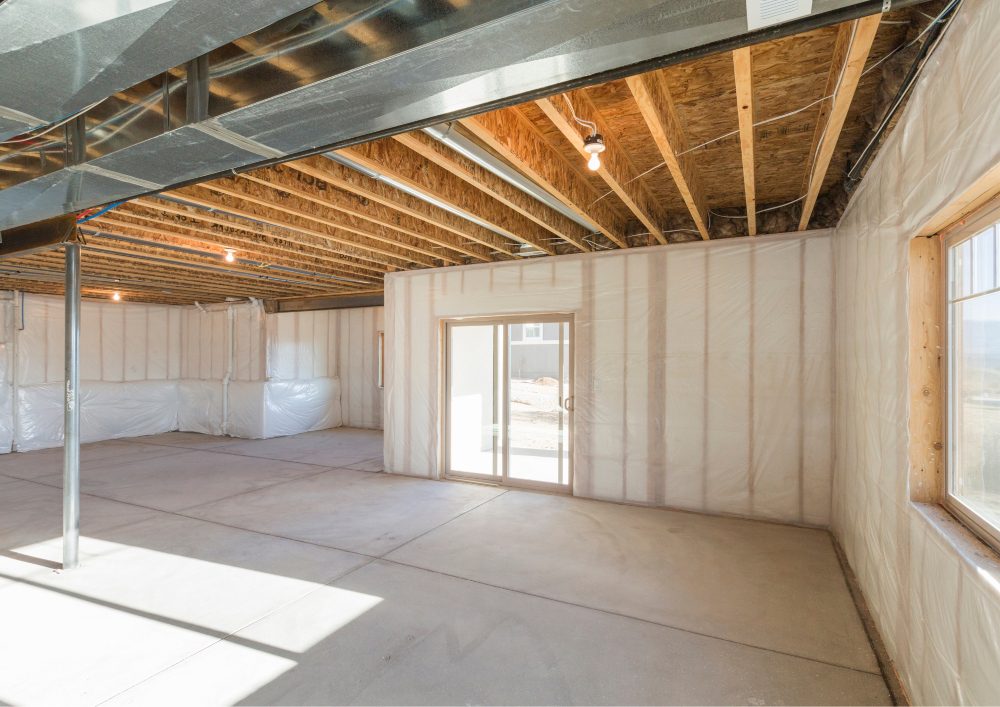
Paint Colors
Choosing the right paint colour for your basement walls can have a transformative effect on the space. The colours should match the function of your room, such as warm, earthy colours for bedrooms or lounge areas. A mix of dark and colourful colours can create a unique gaming or theatre cave atmosphere. Let the personality of your basement guide you in finding the right colours.
Mirrors
Mirrors can make your basement LOOK BIG. With the right placement and mirror size, your small basement can look as large as a ten-person dining room. Place them opposite light sources to maximize their impact.
However, mirrors can be expensive, and large ones can be difficult to install. The placement is crucial; a poorly placed mirror could reflect less flattering parts of your basement or present a glare. When done right, however, they can be a stunning and functional addition to your basement’s décor.
Wallpaper
Wallpaper is another option for adding personality and visual interest to your basement walls. The variety of textures, patterns, and colours available means you can find something that suits your aesthetic.
However, wallpaper application is less forgiving than paint, requiring a smooth, flawless surface and a fair amount of skill to apply correctly. Another drawback is that wallpaper can peel in high-moisture environments, making it less suitable for basements that have yet to be fully moisture-proofed.
Ceiling Options
The ceiling type you choose can significantly impact your basement’s overall feel. Drop ceilings are easy to install and conveniently conceal pipes, ducts, and electrical wiring. However, they can make your ceiling appear lower, which might not be desirable in a small space.
Drywall ceilings offer a cleaner, more finished look but are labour-intensive and make it more challenging to access utilities later on. An exposed ceiling could be an option if you’re going for an industrial look. This style maximizes the available height but can be noisy and might not suit everyone’s taste.
Multi-Functional Basement
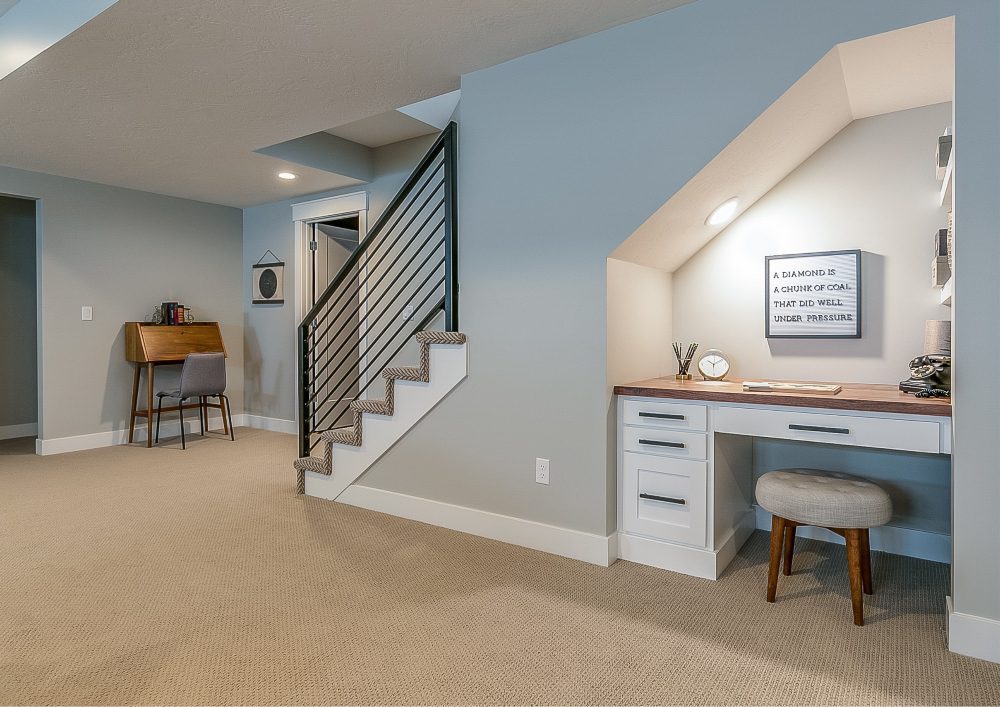
Zone Planning
Creating distinct zones within your basement is a smart way to make the area serve multiple purposes. For example, you can allocate one section for entertainment with a cozy TV setup. Nearby, you can create a workout zone with gym equipment.
Dividing the basement into zones doesn’t necessarily mean building walls or partitions. Instead, you can use decorative elements like area rugs or lighting fixtures to define each space. Furniture can also serve as subtle dividers; a strategically placed bookshelf or sofa can easily separate one area from another.
Think about the flow of traffic as well. You’ll want to arrange your zones to allow easy movement from one area to the next. Accessibility should also be considered. If your basement will serve as a guest room, ensure that the sleeping area is easily accessible from the stairs or elevator.
The goal is to establish functional spaces that adapt to various activities or needs. A well-executed zone plan can make your basement feel organized and purposeful, offering a harmonious blend of functionality and design.
Furniture Choices
Furniture plays a huge role in creating a multi-functional basement. Your furniture choice can make the space versatile or limit its potential. Consider pieces that offer more than one function.
A sofa bed, for instance, provides a seating area during the day and turns into a sleeping space at night. Similarly, a coffee table with hidden storage can serve as a place to stash remote controls or board games when not in use.
Extendable dining tables are another great option. They can serve as a workspace during the day and transform into a dining area when needed. You want expandable furniture like the Drop Leaf table that turns into a dining or end table.
Pieces with wheels or modular components allow you to rearrange the space quickly, adapting to different needs. The aim is to make your furniture work double or triple duty to maximize your basement space.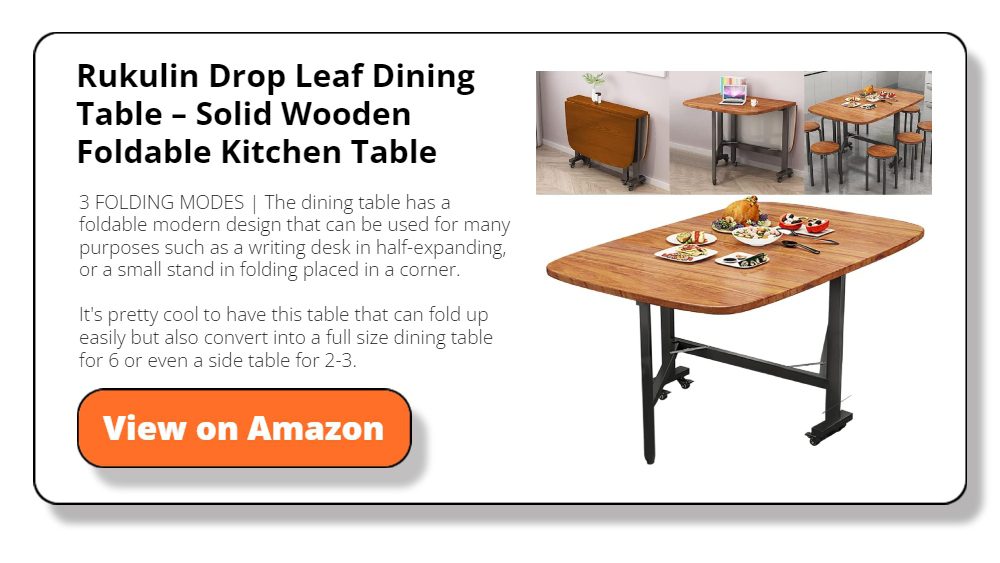
Convertible Spaces
In a small basement, making the space convertible can be a game-changer. For example, installing a Murphy bed can offer you a guest bedroom that converts into a home office or lounge area when the bed is folded.
Similarly, wall-mounted drop-leaf tables can be folded away when not in use, creating more room for other activities. Even small touches, like foldable chairs or rolling carts, can add to the versatility of the space.
Think about the various roles the basement will play. Will it be a kids’ playroom, a home theater, or a workout area? You can easily shift from one function to another by using convertible features. If your basement serves as a workspace and an entertainment area, consider using a rolling room divider with storage.
You can roll it out to separate the areas during work hours and push it back to open up the space for entertainment. The key to a successful convertible space is creativity and planning.
Storage Solutions
Built-In Cabinets
Built-in cabinets are the VIPs of basement storage. Sleek and custom-fit, they make the most of every inch of space. They’re especially handy for keeping things like seasonal decor or old photo albums you don’t need daily. With cabinets, everything is behind closed doors, giving your space a clean, organized look.
But here’s the deal: built-ins are a commitment. You’re essentially building furniture directly into your home. So make sure you’re happy with your choices. Think about what you’ll store how often you’ll need it, and choose finishes that vibe with the rest of your space.
Under-the-Stairs Storage
The space under the stairs is like the basement’s secret treasure chest. It’s often overlooked, but you can turn it into valuable storage with a little creativity. How about installing some custom shelves for a stylish book nook? Or maybe some pull-out drawers for shoes and bags? The possibilities are almost endless.
One thing to keep in mind, though, is accessibility. It’s a weird space, usually with low ceilings and odd angles. Make sure you can easily reach whatever you plan to store there. Otherwise, you’re wasting space instead of maximizing it.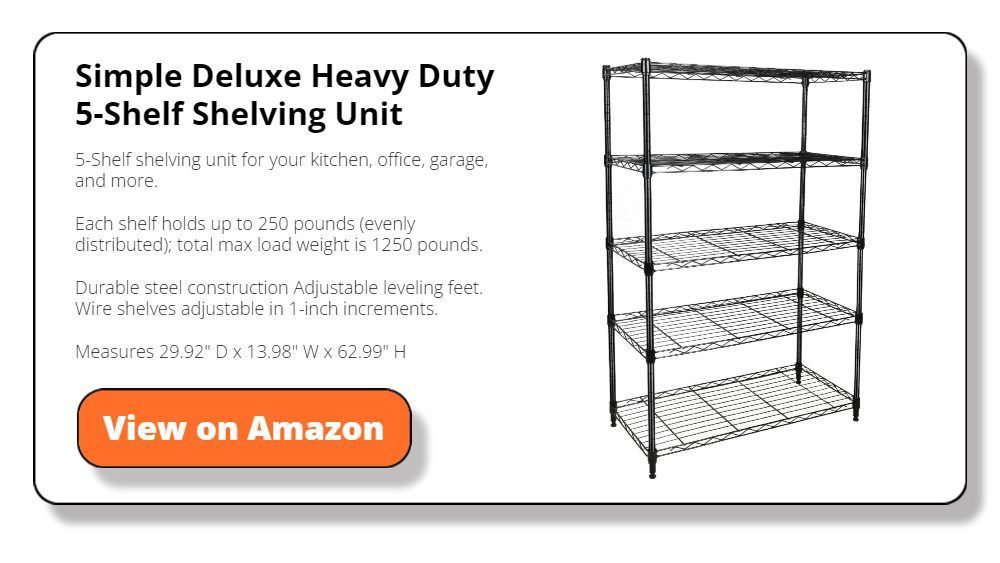
Open Shelving
Open shelving is a flexible and visually appealing way to store and display items. It’s particularly useful for things you use often, like books or kitchenware, as they are easily accessible. Open shelves also allow you to showcase decorative items alongside functional ones.
However, the open design means everything is on display and requires regular tidying. To maintain a neat appearance, use baskets or decorative boxes to contain smaller items. Mix and match different shelf sizes and styles for a more dynamic look.
Wall-Mounted Racks
Wall-mounted racks are a great way to use vertical space in your basement. These racks can hold anything from bikes to garden tools, depending on your needs. They keep the floor clear, making the room look more spacious and easier to clean.
You can install these racks along any free wall or even on the ceiling for items like bicycles or kayaks. Secure them well, especially for heavy items, and keep accessibility in mind when deciding on the height and position.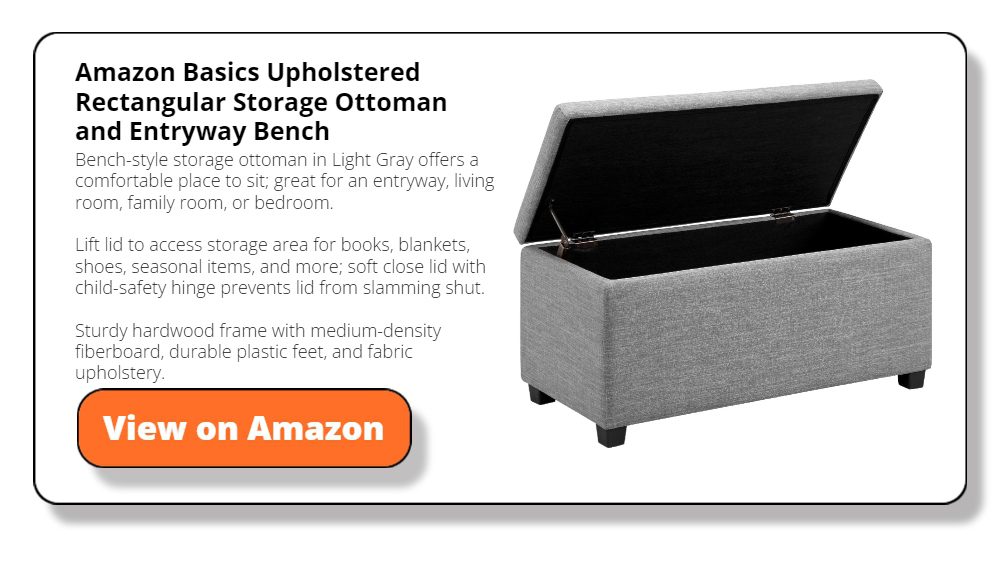
Storage Benches and Ottomans
Storage benches and ottomans are perfect for a multi-functional basement. These furniture pieces offer seating and storage in one. They’re ideal for stashing away blankets, board games, or even kids’ toys, making them a practical addition to any basement setting.
Choose benches or ottomans that complement the rest of your decor. Many come with cushioned tops for added comfort, or you could get one with a hard top to double as a coffee table. They offer a convenient, easily accessible storage solution without sacrificing style.
Conclusion
With the right renovation project, you can expand a small basement into a functional bedroom, entertainment area, gym, or washroom. It’s all about choosing the proper furniture and storage solutions that let you optimize the space of your basement.


